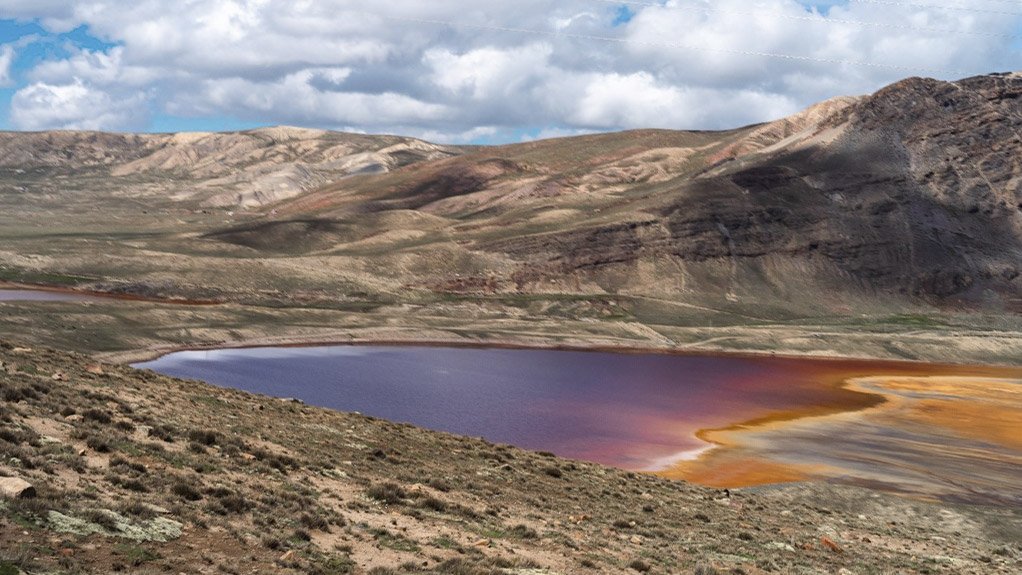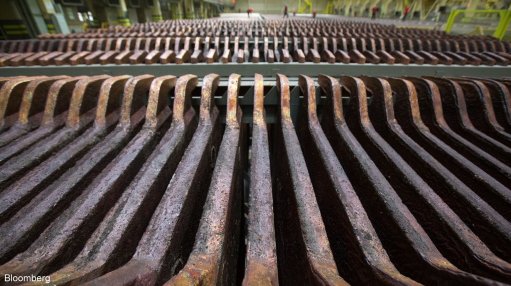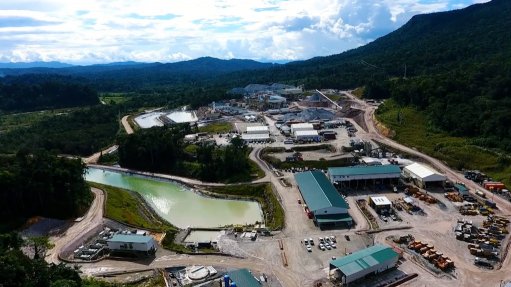Groundwater as a source indicator of pollution in the mining sector
This article has been supplied as a media statement and is not written by Creamer Media. It may be available only for a limited time on this website.
(Virtual Showroom): Groundwater has played and will also play a major role in the sustainability of life on earth. Groundwater makes up approximately 99% of fresh water on earth. The vital supply that groundwater gives us has been highly underestimated when assessing all factors that we as humans contribute to the pollution of the source. As the population of humans grow, the demand for groundwater will exponentially increase.
Groundwater sustains all rivers, lakes, wetlands and additionally ecological and biodiverse systems. The article will focus on groundwater quality, and how it serves as a possible indicator of contamination, especially in the mining sector.
The contamination of groundwater to such extents that it is not safe for potable purposes occurs vastly throughout intense mining areas, whilst it goes hand in hand with the depletion of groundwater as well. This depletion includes decreasing stream flows, drying of springs and loss of vegetation amongst others.
Several industrial – and mining activities have caused serious environmental impacts and environmental degradation. One typical impact on the direct environment and water quality caused by mining operations, includes Sulphate (SO4) related chemical reactions (Acid Mine Drainage). This has become arguably, one of the most serious environmental concerns especially in South Africa. Acid Mine Drainage occur when different chemical reactions such as ion exchanges, mobilization and precipitation of ions and / or groups of ions takes place. With the focus on Sulphate (SO4) related chemical reactions (not limited to), Sulphates are one of the most important reactions in this regard and is a fair representation of pollution at various mine types. Sulphate related reactions take place when it enters the groundwater system through oxidation of pyrite through chemical weathering, mining, washing or percolation through stockpiles of the host material, especially coal dumps or other tailings facilities.
An example of such a reaction is: 2FeS2 + 7O2 = 2FeSO4 + 2H2SO4. Pyrite + Oxygen = iron sulphate + sulphuric acid Iron sulphate forms, as well as sulphuric acid (H2SO4), causing decreases in the groundwater pH and mobilisation of metal ions (that are usually more soluble at a low pH). The acidic pH has significant consequences with contaminated soil, vegetation, and water as a result (Envass Water Quality Reports – 2023).
An additional parameter that can be identified as a source of pollution is Nitrates. The nitrogen levels are assessed through two analyses: nitrates as N (NO3_N) and ammonium as N (NH4_N). The former is an oxidized form of inorganic nitrogen, and the latter is a reduced form of inorganic nitrogen. Nitrates (NO3) and Nitrites (NO2) occur together in the environment and interconvert readily, depending on the redox state of the water (reducing or oxidizing conditions). Ammonia (NH3) and Ammonium (NH4+) also interconvert readily, and their relative proportions of inter-conversion are controlled by water temperature and pH-levels. In natural water, a significant source of nitrates results from the breakdown of organic matter (oxidation of plant and animal debris) and eutrophication.
Ammonia concentrations tend to be elevated in water where organic decomposition under anaerobic conditions occurs. The concentration of nitrogen in water is typically less than 5 mg/l NO3_N and 0.2 mg/l NH4_N. The problem normally occurs during mining closure phases, or at abandoned, derelict and defunct mines, and is a continuing by-product of current mining activities. Mitigation and management are crucial to minimize the overall impact the mining environment is to have on our resources. To decrease penetration of air and water through waste piles by covering (through wet or dry soils) over the exposed material, can be an effective remediate response.
Department of Water and Sanitation prohibits the discharge of water containing waste into a water resource (General Limit of the General Authorizations in terms of the NWA) if the NO3_N levels exceed 15 mg/l and the NH4_N levels exceed 6 mg/l. Where anthropogenic (human) influences prevail, nitrates tend to increase in surface water and groundwater in association with industrial, agricultural and urban runoff, from sources such as agricultural nitrogen-based crop fertilizers, high volumes of animal excrement around feedlots and kraals, and near septic tank systems and pit-latrines (where it is usually found in association with phosphate and bacteria of faecal origin), nitrogen-rich industrial effluents and mining activities.
A common source of nitrogen pollution associated with mining operations is the nitrogen-based explosives (ammonium nitrate compounds – NH4/NO3) used in rock-blasting. Remnants of the explosives are usually very soluble in water and are transported with the rock or end-up in the processing of the ore, and thereby, aqueous nitrogen-species appears in many mine water types. Inorganic nitrogen is primarily of concern in the aquatic habitat due to its stimulatory effect on aquatic plants and algae and due to the toxicity of ammonia to aquatic life. When excessive growth of aquatic plants and algae occur, water bodies become eutrophic; the dissolved oxygen levels decrease, light penetration levels decline, nuisance growth of aquatic plants and/or blooms of blue-green algae occurs, usually resulting in death of fish and other aquatic animals due to depleted oxygen and sunlight conditions. Some algal species may also be toxic to man, livestock or wildlife. Also, as dissolved oxygen levels decrease, non-ionised ammonia toxicity increases. Ammonia concentration also increase as temperature or pH increase (Envass Water Quality Reports – 2023).
The two parameters discussed above are important indicators in the modern industrial / mining sector. These parameters as mentioned is not naturally elevated which is significantly effective indicators of groundwater contamination.
It is therefore crucial to comply with necessary legislation such as Water Use Licenses and Authorization limits as treatment of contaminated sources is a very expensive exercise. It is also crucial to have baseline and/or background information regarding the groundwater of the area. Drilling of new resources, or identifying suitable groundwater localities to be sampled, as well as determining a comprehensive water quality analysis package is essential to obtain the necessary information needed to study the quality and characteristics of the area.
Environmental Assurance specializes in assisting our clients for optimum mitigation measurements and actions.
Comments
Press Office
Announcements
What's On
Subscribe to improve your user experience...
Option 1 (equivalent of R125 a month):
Receive a weekly copy of Creamer Media's Engineering News & Mining Weekly magazine
(print copy for those in South Africa and e-magazine for those outside of South Africa)
Receive daily email newsletters
Access to full search results
Access archive of magazine back copies
Access to Projects in Progress
Access to ONE Research Report of your choice in PDF format
Option 2 (equivalent of R375 a month):
All benefits from Option 1
PLUS
Access to Creamer Media's Research Channel Africa for ALL Research Reports, in PDF format, on various industrial and mining sectors
including Electricity; Water; Energy Transition; Hydrogen; Roads, Rail and Ports; Coal; Gold; Platinum; Battery Metals; etc.
Already a subscriber?
Forgotten your password?
Receive weekly copy of Creamer Media's Engineering News & Mining Weekly magazine (print copy for those in South Africa and e-magazine for those outside of South Africa)
➕
Recieve daily email newsletters
➕
Access to full search results
➕
Access archive of magazine back copies
➕
Access to Projects in Progress
➕
Access to ONE Research Report of your choice in PDF format
RESEARCH CHANNEL AFRICA
R4500 (equivalent of R375 a month)
SUBSCRIBEAll benefits from Option 1
➕
Access to Creamer Media's Research Channel Africa for ALL Research Reports on various industrial and mining sectors, in PDF format, including on:
Electricity
➕
Water
➕
Energy Transition
➕
Hydrogen
➕
Roads, Rail and Ports
➕
Coal
➕
Gold
➕
Platinum
➕
Battery Metals
➕
etc.
Receive all benefits from Option 1 or Option 2 delivered to numerous people at your company
➕
Multiple User names and Passwords for simultaneous log-ins
➕
Intranet integration access to all in your organisation























